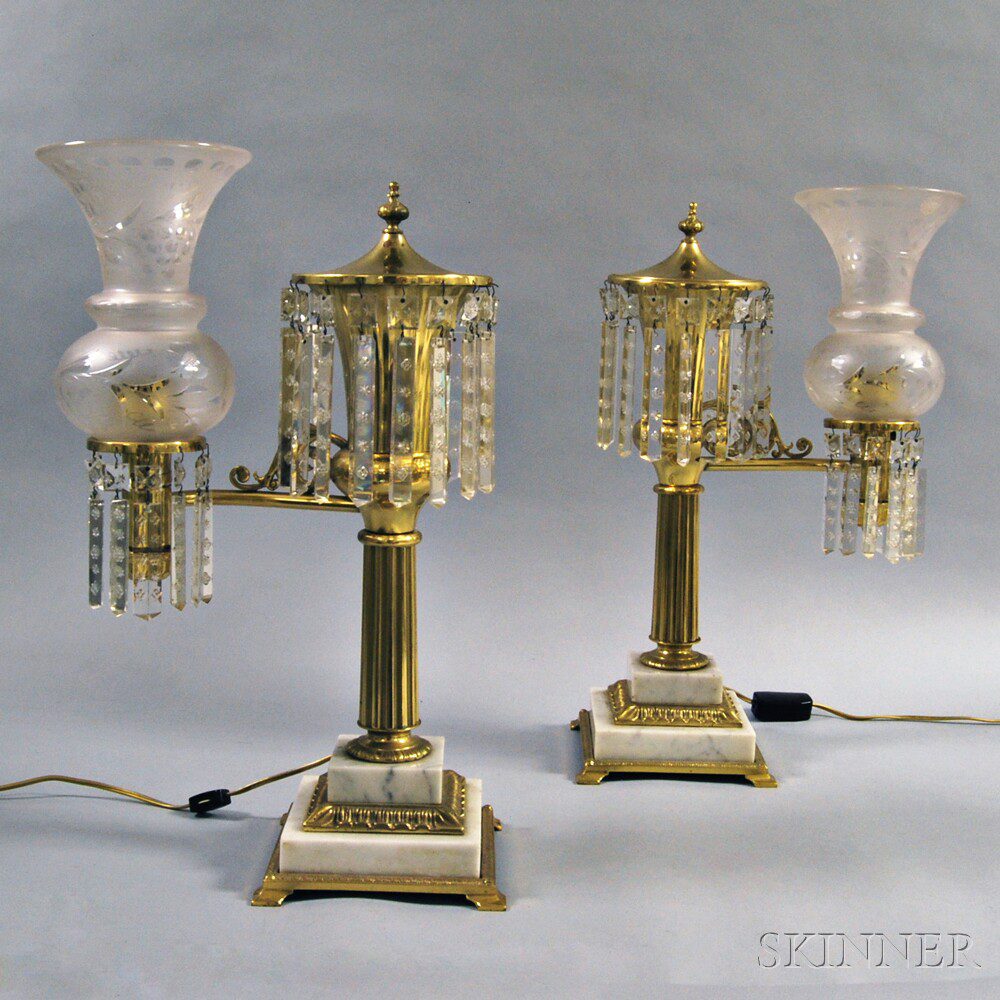’Twas the Time of Darkness
By • October 26, 2016 0 1927

The setting sun shrouded the typical early colonial home in darkness. For the ordinary American colonist, bright lighting simply was not worth the candle; the need for more light was secondary to the cost and inconvenience of providing it. Most Americans lived by the light of the hearth, postponing the many tasks requiring more light until the sun came up.
To get an idea of how dim the lighting was, consider an 18th-century writer who described as bright as day a ballroom lit up by amassed candles. He may well have been talking about a level of light equivalent to that generated today by a 25-watt bulb.
Candles provided the most satisfactory illumination, but, due to the candle tax of 1706, which also forbade the making of homemade candles, wax candles became too expensive for most households. So, the colonists often used oil lamps to supplement firelight and costly candles.
The simplest kind of oil lamp was made by pouring some fish oil or kitchen grease into a cup and putting a string wick into it. This type of lamp was called a crusie, the word thought to have come from the Scottish word ‘cruse,’ a vessel for oil. It was a very simple arrangement: a circular iron pan with one side shaped into a channel to receive a wick. Opposite this channel, a handle was attached with a wire link. Then an iron spike shaped like a boat hook was attached to the end of the handle. The hook would be jammed into the chink of a wall or secured to a shelf or mantle.
Improvements to the primitive crusie lamps spawned the betty lamp, probably the most widely used lighting device in colonial America. This type of lamp (named betty from the German word “besser,” which means better) was preferred because it had a hinged lid that closed, so less grease was spilled.
Peter Derr (1793-1868) of Berks County, Pennsylvania, was one of the more famous betty lamp makers. Many of his lamps, which were usually dated and initialed, are in museums and private collections. When they do show up at auction, they command prices upwards of $5,000, although more common betty lamps can still be bought for as little as $100.
A feeble light was just one of the inconveniences for those who burned the midnight oil, since oil-burning lamps produced acrid fumes and smoke. So, in 1784, the first radically improved lighting device — a lamp more congenial to the common purse and irritable eyes alike — came on the market. The new lamp, an invention of Aimé Argand of Switzerland, fed oil from an elevated container to a tubular wick, with air passing over the wick’s outer and inner surfaces. Later designs added a glass chimney, which served as a blower. Lighting entered a new era.
These lamps became immensely popular in America. American pressed-glass manufacturers eagerly put vast quantities of cheap, attractive, easy-to-clean models on the market. While they never surpassed candles in popular favor, the lamps increased enormously the demand for whale oil, which became too costly for ordinary households as demand rose. By 1850, paraffin, a less expensive alternative, was introduced.
By 1840, gas lighting was the last major breakthrough of the period, before both oil and gas lighting succumbed to electric lighting. Thomas Edison consciously modeled his plans for an electric lighting system on gaslight technology. By the time of his 1879 invention of a practical electric lamp, the gas infrastructure was in place and manufacturing facilities were in operation. Since gaslights could be operated independently, Edison designed his lamps to be capable of independent operation too.
Early Argand lamps can be found for $500 and up, depending on the materials, the workmanship and the color of the shade. Even though betty lamps were of an earlier period, they are less costly since they are much simpler devices. A betty lamp for the 1700s in original condition was recently listed on eBay for $189. A wide array of converted gaslights — from sconces for a few hundred dollars to ornate chandeliers for several thousand — are available via shops and auctions. Antique lighting is a great way to accent any style of décor.
At Queen Victoria’s death in January 1901, electric lighting was still in its infancy. Small towns in the countryside were almost exclusively lit by candles and oil lamps. It wasn’t until after World War I that the flip of the switch became the predominant source of light in the American home. The electric light had vanquished the night.

